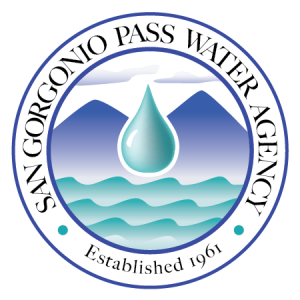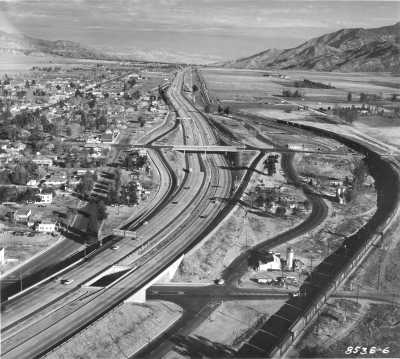
The San Gorgonio Pass Water Agency Act was passed in 1961 by the California State Legislature. The Act created the Agency and defined its powers. The Agency’s service area of approximately 225 square miles is in Riverside County and extends from Calimesa to Cabazon. The service area includes the incorporated cities of Calimesa, Beaumont, and Banning, and the communities of Cherry Valley, Cabazon, and the Banning Bench.
The Agency, one of 29 State Water Contractors, purchases water from the State of California and sells it to local retail water agencies. Water is imported into the service area by the California Aqueduct. Click here to learn more about the State Water Project.
The final link of the State Water Project to the Pass region, the East Branch Extension, was completed in 2003. Phase 2 of the East Branch Extension was completed in 2017, bringing the capacity of the Extension to 17,300 acre-feet — the Agency’s official allotment of State Water Project (SWP). This is enough to supply approximately 35,000 families each year.
Full History
Find the complete history of the Agency, starting in early 20th Century California, below.
View the Document Here
Milestones
Voters approve State Water Project.
Agency signs contract for 15,000 acre-feet per year of State Water Project (SWP) water.
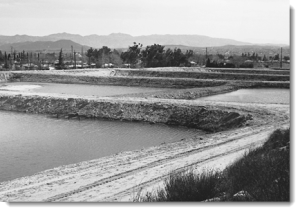
Agency starts paying on State Water Project (SWP). Will continue to pay through 2035.
Agency contracts for an additional 2,300 acre feet per year of SWP water bringing the Agency’s total contract amount to 17,300 acre-feet per year.
Agency signs 1st Joint Facilities Agreement with San Bernardino Valley MWD to move water 17 miles closer to the Agency.
U.S. Geological Survey completes report on underground storage in Pass area. (1999-D). It defines the basins within the Agency’s service area. Study investigates recharge in the Beaumont Storage Unit (BSU), also known as the Beaumont Groundwater Basin.
California Department of Water Resources (DWR) completes report on extension of State Water Project (SWP) to the Coachella Valley. Report recommends the “Pass” route as the preferred alternative. The extension requires the participation of the Desert Water Agency and Coachella Valley Water District. The desert contractors do not formally elect to participate in the extension until 1991.
Agency signs 2nd Joint Facilities Agreement with SBVMWD to extend State Water Project delivery facilities to Yucaipa.
Agency starts specific planning for delivery facilities to the area.
Agency produces report on Dependable Yield of Beaumont Basin. This is the first report on “safe yield”.
Preliminary identification of artificial recharge site. Report concludes that the Beaumont Storage Unit forebay is the best site(s). Confirmation of USGS Report of 1971.
Agency completes Test Wells No. 1 & 2 in the Beaumont Basin. Drilling investigates the underground soils.
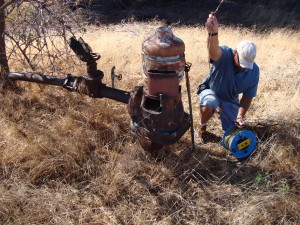
Desert Agencies pull out of SWP extension. Agency starts a “stand alone” project to bring State Project Water to the Pass. EIR process for the project begins.
Agency completes regional water database.
Agency completes Artificial Recharge Feasibility Investigation. The investigation performs Geophysical Logging and Aquifer Pump tests and percolation tests in Little San Gorgonio Creek Spreading Grounds.
1st Engineer’s Report on Water Conditions is completed.
Report on Implementation of Urban Water Conservation Plan. Report includes Best Management Practices (BMP’s).
Report on population forecast and establishment of a monitoring well network.
Report published on groundwater barrier between the Beaumont Storage Unit and Banning Storage Unit.
Completed EIR for East Branch Extension. Challenged in Superior Court. The court ruled the EIR adequate. The ruling is appealed to the Appellate Court, who rules the EIR inadequate and the Agency completes, in 1996, an Addendum to the EIR at a cost of $75,000.
Agency asks California Water Commission to complete the State Water Project to the Agency. DWR completes a feasibility study and determines that it could complete the facilities requested by the Agency as a part of the SWP. The conclusions of the study bring access to SWP power and financing.
First isotope study in area completed. Study finds indication that some water is very old and there appears to be no water coming into the BSU from Banning Canyon.
Agency signs agreement with DWR to construct the EAST BRANCH EXTENSION of the SWP.
Starting in December 1998 and through 1999 DWR awards several contracts to complete construction of the East Branch Extension.
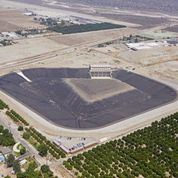
Agency completes third safe yield study of the BSU in March. Study determines safe yield to be 5,000 to 6,000 af/yr.
Agency begins selling water to Yucaipa Valley Water District for use in the City of Calimesa.
Agency completes strategic plan outlining the direction of the Agency for the next several years.
Agency starts selling water in large quantities to Beaumont Cherry Valley Water District to replenish the Beaumont Basin.
Agency completes a water conservation and education master plan, realizing that water conservation is one of the keys to meeting future water demands.
Agency completes a recharge study of the Beaumont Basin, identifying the best locations in which to construct future recharge facilities.
Agency completes a Supplemental Water Master Plan.
Agency begins work on its first Urban Water Management Plan, due in 2010.
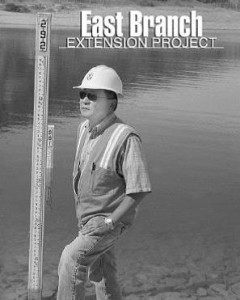
Agency constructs Phase 1 of its conjunctive use storage program, to be completed in 2016.
Agency enacts water shortage ordinance, prioritizing and allocating its water in a water-short year
East Branch Extension (EBX2) completed. The region can now import its full SWP allocation plus.
Agency secures 100% reliable 1,700 AF of annual imported water secured through 2036. This water is referred to as “Nickel Water” as this water was originally owned by Nickel Farms LLC.
Agency, along with other local entities, forms a Groundwater Sustainability Agency for the San Gorgonio Pass Subbasin as part of SGMA implementation.
Agency, along with other local entities, forms a Groundwater Sustainability Agency for the Yucaipa Subbasin as part of SGMA implementation.
Agency secures position and begins investing in the planning phase of Sites Reservoir project (10,000 AF share).
Local retail partner Beaumont Cherry Valley Water District, working through the Agency, invests in a 4,000 AF share of the Sites project bringing the regional investment to a 14,000 AF share total.
Agency begins recharging imported water to the newly constructed recharge facility.
Agency purchases 16 CFS capacity in the EBX pipeline from San Bernardino Valley Municipal Water District.
Agency participates in the Delta Conveyance Project at a participation level over minimums.


